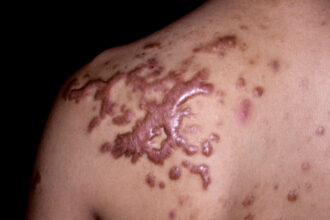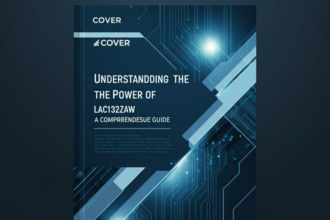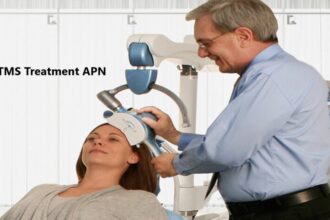Living with inomyalgia can feel like navigating a complex maze. It’s a condition that many people are unaware of, yet it affects countless individuals every day. Those who experience inomyalgia often struggle with persistent pain and fatigue, making daily tasks seem monumental. But amidst the challenges lie stories of resilience and hope.
This blog post aims to shine a light on what inomyalgia truly is, its impact on life, and the ways to cope effectively. Whether you’re newly diagnosed or seeking support for someone you care about, understanding this condition can be an empowering journey towards better health and awareness. Let’s explore together the various facets of living with inomyalgia—because knowledge is just as vital as treatment when confronting this invisible battle.
Understanding Inomyalgia: What it is and its Causes
Inomyalgia is a chronic pain condition that primarily affects muscles and soft tissues. It can lead to widespread aches, stiffness, and fatigue that often disrupts daily life. While the exact cause remains unclear, various factors contribute to its onset.
Genetics may play a role, as some individuals are more susceptible than others. Additionally, environmental triggers such as stress or trauma can exacerbate symptoms. Hormonal imbalances and infections have also been linked to inomyalgia development.
This multifaceted nature makes inomyalgia challenging to diagnose. Symptoms vary widely from person to person, leading many sufferers on a long journey before receiving proper care. The diverse presentation of this condition highlights the need for increased awareness and understanding within medical communities and society at large.
The Prevalence of Inomyalgia and Common Symptoms
Inomyalgia is more common than many realize, affecting millions of individuals worldwide. It often goes undiagnosed or misdiagnosed due to its complex nature and overlap with other conditions.
The symptoms can vary significantly from person to person. Common indicators include persistent muscle pain, fatigue, and sleep disturbances. Many also report cognitive issues such as memory lapses or difficulty concentrating, sometimes referred to as “fibro fog.”
People living with inomyalgia may feel overwhelmed by these symptoms, which can impact daily activities and overall quality of life. Everyday tasks become daunting challenges when plagued by chronic discomfort and exhaustion.
Understanding the prevalence of this condition is crucial for fostering empathy among those who might not experience it firsthand. Awareness can lead to better support systems for those navigating this silent struggle.
The Physical and Emotional Impact of Inomyalgia on Daily Life
Living with inomyalgia can be a daily challenge. The physical symptoms often manifest as widespread pain, fatigue, and stiffness. Simple tasks like getting out of bed or preparing meals may feel overwhelming.
Emotionally, the struggle is equally profound. Many individuals experience anxiety and depression due to chronic discomfort and unpredictability of their condition. This emotional burden can lead to feelings of isolation.
Social interactions may diminish as people withdraw from activities they once enjoyed. Friends and family might not fully understand the invisible nature of inomyalgia, adding to frustration.
Coping mechanisms become essential for navigating these ups and downs. Developing resilience while seeking support fosters a sense of control amidst chaos. Every small victory counts when managing both the physical aches and emotional waves that accompany this condition.
Coping Strategies for Managing Inomyalgia Symptoms
Living with inomyalgia can be overwhelming. However, several coping strategies may help ease daily challenges.
First, maintaining a consistent routine is crucial. Establishing regular sleep and meal times can create stability. This helps your body function better and manage symptoms more effectively.
Gentle exercise is another effective strategy. Activities like yoga or walking promote circulation without overexertion. These movements also release endorphins, which can elevate mood.
Mindfulness practices should not be overlooked either. Techniques such as meditation or deep breathing exercises provide mental relief from pain and stress.
Nutrition plays a significant role too—consider an anti-inflammatory diet rich in fruits, vegetables, whole grains, and healthy fats to support overall health.
Keeping a journal can aid emotional expression while tracking symptom patterns. It’s a powerful tool for understanding triggers and communicating with healthcare providers about your journey through inomyalgia.
Building a Support System: The Importance of Education and Advocacy
Creating a robust support system is crucial for those living with inomyalgia. Surrounding yourself with understanding individuals can make a significant difference. Friends, family, and support groups can provide the emotional backing needed to navigate daily challenges.
Education plays an essential role in this journey. When loved ones understand what inomyalgia entails, it fosters empathy and minimizes frustration. Sharing resources about symptoms and coping mechanisms helps bridge the knowledge gap.
Advocacy is equally important. By speaking out about your experiences, you not only empower yourself but also raise awareness of the condition. Engaging with community organizations or online forums creates connections that are invaluable.
Moreover, educating healthcare providers ensures they remain informed about inomyalgia’s complexities. This advocacy leads to better treatment options and holistic care plans tailored to individual needs. Together, these elements create a network of strength against isolation and uncertainty.
Alternative Therapies for Inomyalgia Management
Alternative therapies can offer a holistic approach to managing inomyalgia symptoms. Many individuals find relief through practices like acupuncture, which may help alleviate pain by targeting specific pressure points.
Yoga and gentle stretching exercises are also beneficial. They promote flexibility and relaxation, reducing tension in the muscles. Mindfulness meditation is another powerful tool that fosters mental clarity and helps manage stress levels.
Herbal supplements, such as turmeric or ginger, have anti-inflammatory properties that some patients report finding useful. Nutritional adjustments can further support overall well-being; a balanced diet rich in omega-3 fatty acids may reduce inflammation.
Incorporating essential oils into daily routines could provide comfort. Lavender or eucalyptus oil used in aromatherapy might ease both physical discomfort and emotional distress associated with inomyalgia. Exploring these options could lead to discovering what best alleviates individual experiences of this condition.
Conclusion: Spreading Awareness and Finding Hope in the Journey with In
Living with inomyalgia is a journey filled with challenges. Yet, it’s also one that can lead to profound insights and personal growth.
Spreading awareness about this condition is crucial. The more people understand inomyalgia, the less stigma surrounds it. Education fosters empathy and support within communities.
Each shared story creates ripples of understanding. When we talk openly about our experiences, we empower others who may be silently struggling.
Hope often arises from connection. Finding support groups or online forums can make a world of difference. Sharing coping strategies provides comfort and new ideas for managing daily life.
Together, as advocates for those affected by inomyalgia, we illuminate paths forward. Every small effort counts toward creating a compassionate environment where individuals feel seen and supported on their journeys through this complex landscape.
FAQs
Living with inomyalgia can be challenging, but knowledge and understanding offer a pathway toward better management. Here are some frequently asked questions to help clarify common concerns about this condition.
What is inomyalgia?
Inomyalgia refers to a chronic pain syndrome characterized by widespread muscle pain and tenderness. It affects various parts of the body and often comes with fatigue, sleep disturbances, and emotional distress.
What causes inomyalgia?
The exact cause remains unclear. However, factors such as genetics, infections, physical trauma, or prolonged stress might contribute to its onset. Research continues to explore these areas for clearer answers.
How prevalent is inomyalgia?
Estimates suggest that millions of people worldwide live with inomyalgia. While it can affect anyone at any age, it tends to occur more frequently among women than men.
What symptoms should I look out for?
Common symptoms include persistent muscle pain throughout the body, fatigue that doesn’t improve with rest, insomnia or disrupted sleep patterns, cognitive difficulties (often referred to as “fibro fog”), and heightened sensitivity to touch or temperature changes.
Can lifestyle changes help manage my symptoms?
Yes! Incorporating regular exercise tailored to your ability level can improve overall well-being. Additionally, a balanced diet rich in anti-inflammatory foods may alleviate some discomfort associated with the condition.
Should I consult healthcare professionals if I suspect I have inomyalgia?
Absolutely! Speaking with doctors who specialize in chronic pain conditions will provide insights into effective management strategies tailored specifically for you.
Are there alternative therapies available for managing my condition?
Many individuals find relief through alternative therapies such as acupuncture, massage therapy, yoga practices focused on mindfulness or flexibility training like Tai Chi—each offering unique benefits depending on personal preferences.
By addressing these FAQs surrounding inomyaglia awareness while sharing coping techniques within supportive communities—the journey towards managing this complex condition becomes less daunting. Together we can shine light on living positively despite challenges faced along the way.

















